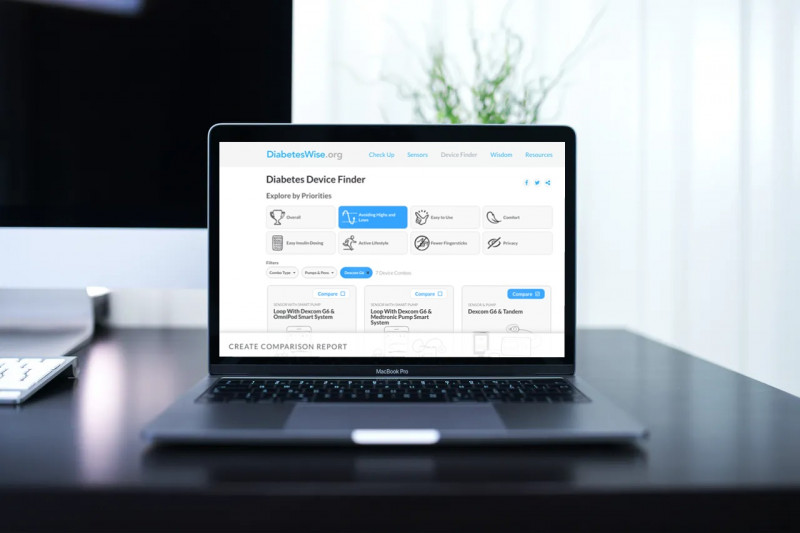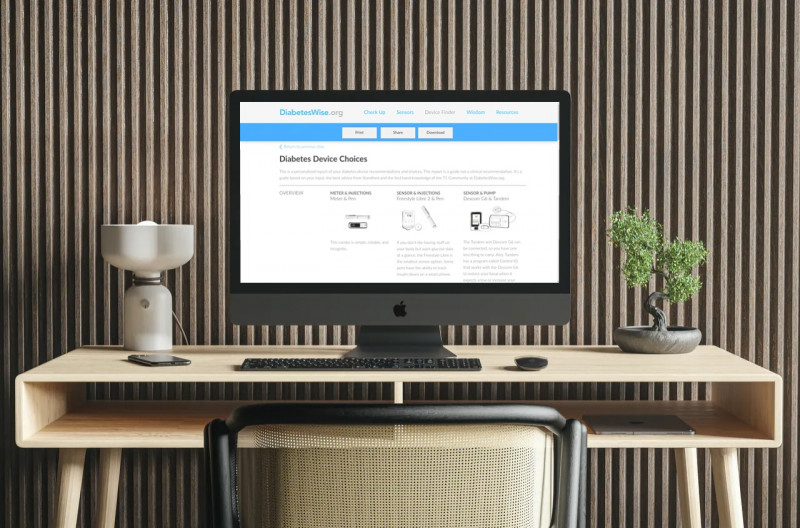The 10th of October 2020 saw a major milestone in DiabetesWise with the launch of the Device Finder functionality. This free unbiased digital tool helps people living with diabetes to find the right treatment combination of diabetes technology to match their lifestyle and priorities.
UpShift has been part of the DiabetesWise journey since 2017 and I wanted to talk about the Device Finder, what it does and how it helps.
You can try the DiabetesWise Device Finder here: https://diabeteswise.org/device-finder/
About Diabetes
First up let’s take a look at diabetes and diabetes treatment. If you’re already familiar with this feel free to skip to the next heading.
Type 1 Diabetes( T1D) is a life threatening autoimmune condition where the pancreas can no longer produce insulin - a vital hormone which enables the body to use blood sugar as energy. T1D is a permanent incurable condition that can happen at any time, to anyone - but often affects children. Almost all people living with T1D are insulin dependent and will die without it.
Type 2 Diabetes (T2D) is a chronic disease where insulin production is limited and the body cannot produce or use insulin at the required rate. T2D can come from genetics or lifestyle factors, and in some cases can be managed without additional insulin.
With no insulin, or not enough insulin the key treatment for both forms of diabetes is giving more insulin - generally as an injection. Carbohydrates are converted to blood sugar, which requires insulin to be converted into usable energy.
The main treatment loop is broadly like this:
-
Measure blood sugar levels.
-
Estimate the amount of carbohydrates that are being consumed.
-
Calculate a dose of insulin based on blood sugar levels, incoming carbohydrates and a number of other factors.
-
Inject insulin.
-
Continue to check blood sugar levels.
For added stress too much insulin can cause a coma or death while too little insulin will cause the body to simultaneously starve and poison itself. Imagine going through this procedure every time you eat and at any time of the day or night, depending on any number of factors such as exercise, stress, illness etc. You can see how overwhelming diabetes treatment can become.
It’s important to know that people with diabetes can lead active, fulfilling lives and their condition doesn’t need to hold them back. Members of the T1D community have run countries, climbed Mount Everest, captained national sports teams and competed in gruelling multi-day adventure races.
About DiabetesWise
DiabetesWise is an initiative based at Stanford School of Medicine and supported by The Leona M. and Harry B. Helmsley Charitable Trust. It came out of previous studies looking at ways that insulin dependent people could improve their health and how to enable them to get there. At the moment the most effective treatment option for insulin dependent people is to use devices which automate the checking of blood sugar levels and the administration of insulin.
Removing hurdles around device usage was identified as a significant way to improve health outcomes and DiabetesWise was created. The idea is to create a pathway for people to follow that guides them through the many options available to them and helps them identify which combination of devices will work best for their personal situation.
About DiabetesWise Device Finder
I’ve talked about our past 3 years of work with DiabetesWise here. The focus over the past year has been to get to Device Finder ready for public use - this included a 7 month medical trial.
The heart of the DiabetesWise Device Finder is a digital tool that helps people with insulin-requiring diabetes navigate the many different device combinations with unbiased technical comparisons and real world experiences from other users.

As of November 2020 there are 28 different device combinations to browser and compare. From manual blood sugar checking and an insulin syringe to high tech setups that act as artificial pancreas.
To help people personalise their choices a quick checkup questionnaire suggests personalised recommendations based on their current situation and priorities. The Device Finder then allows users to dig deeper and explore their options.
People who are currently using diabetes devices can even use Device Finder to see what other devices might work best with their blood glucose monitors or insulin pumps, given the priorities or lifestyle needs of that individual.
DiabetesWise Device Finder features include:
-
Comparison tool – Comprehensive tool that allows you to compare device recommendations based on seven different priorities such as ease of use, privacy, or active lifestyle.
-
Actionable next steps – Cost and coverage estimate as well as contact information for device manufacturers.
-
Real-life testimonials – Advice and feedback from people with diabetes who have used the devices.
-
Downloadable Report – Once the final report is given, there is an option to download to a wireless device using a QR Code.
-
Share with Healthcare Provider feature – After giving recommendations, the site offers a way to share information to a person’s Healthcare Provider via email
You can try the DiabetesWise Device Finder here: https://diabeteswise.org/device-finder/
A Personal Note
My son was diagnosed with Type 1 Diabetes when he was 3½ years old. His diagnosis and ongoing treatment has been an intense experience for our whole family.
He turned 9 this year and I’m super proud of his attitude and approach to life. He enjoys school, reading, Minecraft, Lego, playing hockey and mountain biking - which is a great mix for a 9 year old boy.
Having a personal connection to T1D made working with DiabetesWise particularly rewarding. We have developed a great tool to help people living with insulin dependency. It has also been a valuable tool I have been able to use for my own family. Using DiabetesWise we can create a comparison of the different device combinations we’ve used to manage his diabetes:

This year my son started using a Dexcom G6 continuous blood glucose monitor and Tandem t:slim insulin pump. They have changed our lives and made the day to day diabetes management so much easier and dramatically improved control of his blood sugar.
The only downside for us is in New Zealand only the pump is funded by the public health system (and then only for children) and we have to pay for the continuous blood glucose monitor ourselves - which is over NZD$4,500 per year.
The lack of funding in New Zealand for continuous blood glucose monitors and pumps for all insulin dependent people is a glaring hole in our health system as the cost of unmanaged blood sugar levels far outstrips the cost of the devices.
If you know anyone with diabetes please send them over to DiabetesWise - https://diabeteswise.org/ - it’s a free resource created by the community, for the community and will hopefully help them improve their quality of life.
More about UpShift’s work with DiabetesWise:



